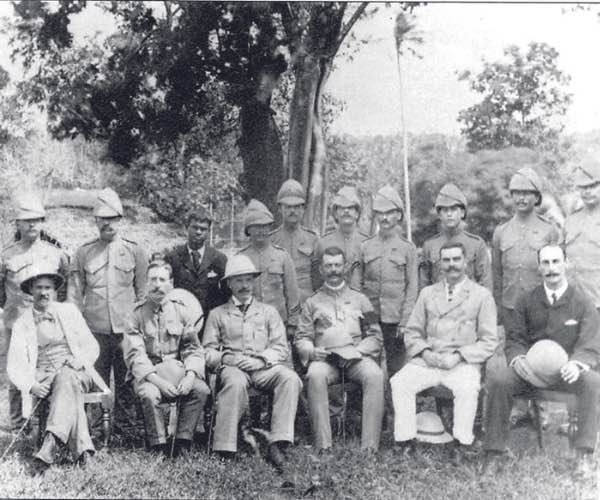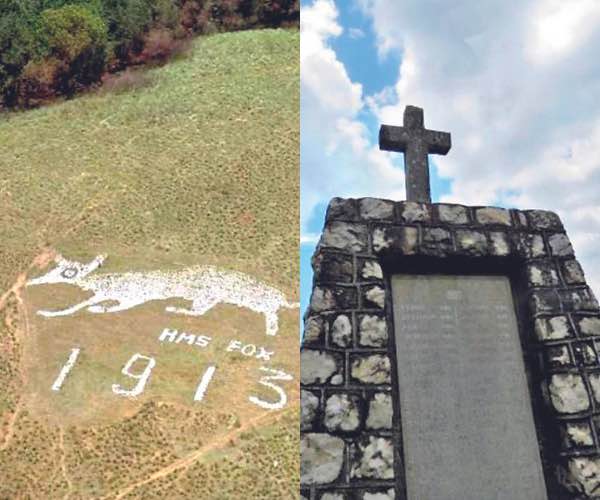
Apr 06 2024.
views 321


About fifteen years ago a group of us were passing the Diyatalawa Railway Station south of Badulla. Inquisitive experiences in Sri Lanka have always led me to stop the car at old churches, many graveyards, and lots of old railway stations. There are so many hidden gems in Sri Lanka. So, we pile into the small station and are met by the station master in his white uniform. Being British I love to see a man in uniform. I hated my school uniform badge however which had the logo of gallows and a monkey being hung. For those sad enough to want more info on the monkey check out. Hartlepool and Monkey Hanger.
After expanding on the details of how the station master controls the trains with a Victoria system invented by the British, we all head down the immaculate well-kept platform. Rows of flower tubs and displays give you the feeling of being in someone’s garden. As I look up, I am drawn to a large photo of a mass of South African Boer soldiers standing on the same platform I’m standing on. It's dated 1900. Having spent my youth in South and Central Africa I know what I am looking at. What I can’t work out is what were these South African Boers with origins from Europe doing here in Sri Lanka over a hundred years ago. The British had mixed results fighting the Boers in South Africa and took to holding prisoners.
Over 18,000 South Africans died in concentration camps. The elite military Boers captured were sent to St. Helena, Bermuda, India and Ceylon during and shortly after the Boer Wars. The Brits were taking a pounding from the Boers in 1899 and 1900 in Ladysmith, Mafeking and Kimberly in South Africa. Over a hundred thousand lives had been lost. The British knew the high quality of the Boer officers and soldiers fighting for their own country would be impacted by sending thousands away to concentration camps abroad. Boer prisoners were sent to Sri Lanka, some on board HMS Fox. Boers generally were conservative Calvinist Protestants, tough with the love of their country, which they first occupied in the 1650s. Their accommodation at Diyatalawa consisted of rows of corrugated iron sheds on the hillside above the station. Hence it was named “Silver Sheen”.
The Boer graveyard on this site was later cleared for a rifle range. There were also smaller camps at Mount Lavinia, Ragama, Hambantota and Uragasmanhandiya. How many died in Sri Lanka is not clear and where they were all buried is also not clear. 133 POW wooden crosses and five marble tombstones were in Hambantota but most were later washed away during the tsunami. Those Boers who got home had sworn allegiance to the British but had to pay for their service release and the sailing cost home. Whilst there were at one point only twenty “irreconcilables” (i.e. they would not give allegiance to Britain) this was reduced to only two.
Henry Engelbrecht, an ex-prisoner became the first game park warden in Sri Lanka focusing on Yala till 1928. His stone grave was rediscovered in Hambantota by Robin Woodruff in the early 2000s. Henry's son had also worked as a ranger in the park. Robin was a frequent visitor to Sri Lanka and explored the Boer history sites in Sri Lanka. For the majority of those who returned to South Africa, I’m sure they would have looked back on their limited time in Sri Lanka in a positive way.
Conditions were not harsh, the weather was very acceptable, they were well treated and enjoyed the outdoor work. They had missed a lot of the brutal killing war in South Africa as well as the harsh concentration camps. So dont forget to check out all those little up-country railway stations. You are likely to get a guided tour by a man in uniform who is proud of what the British Empire achieved on this island.
0 Comments